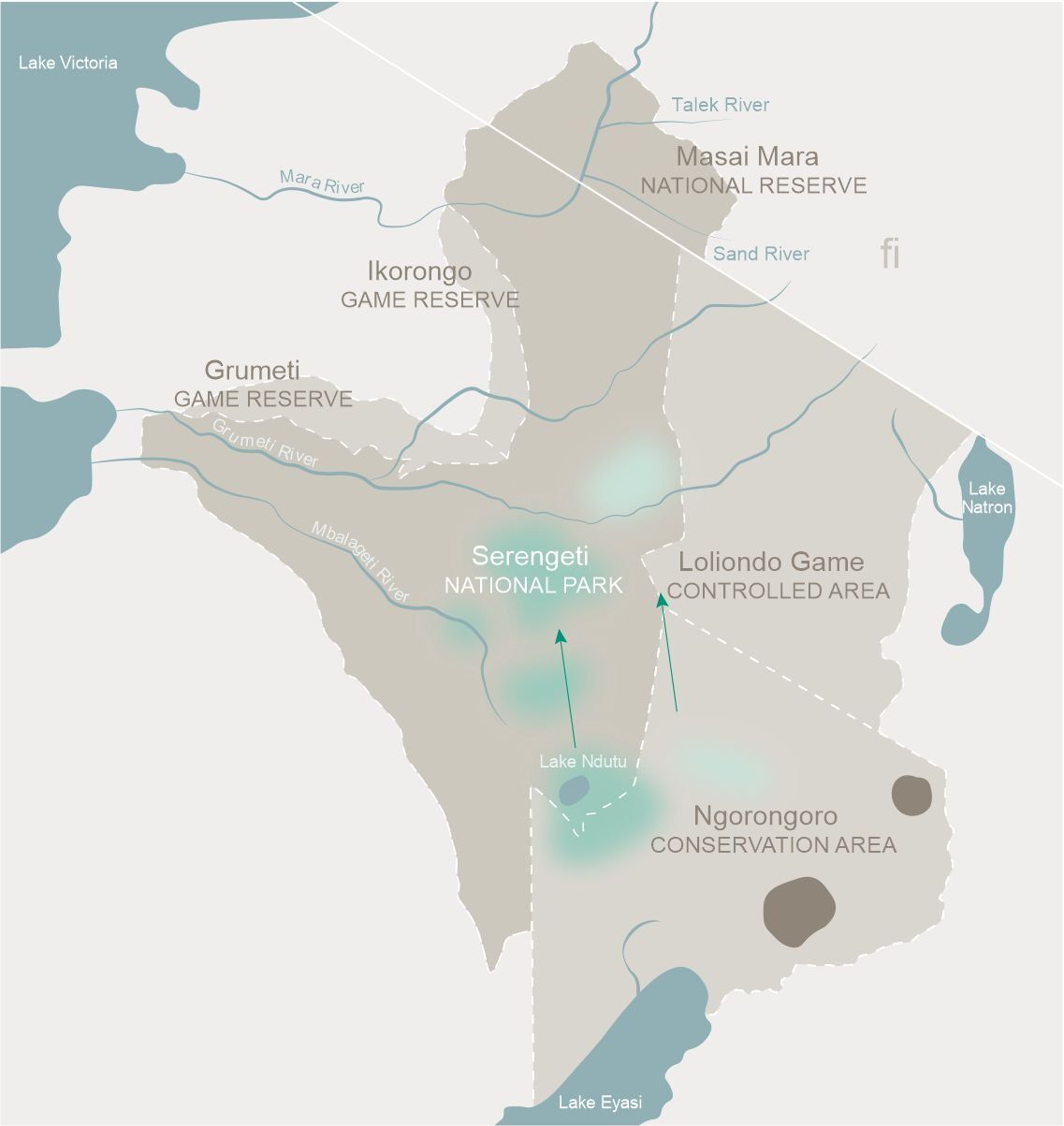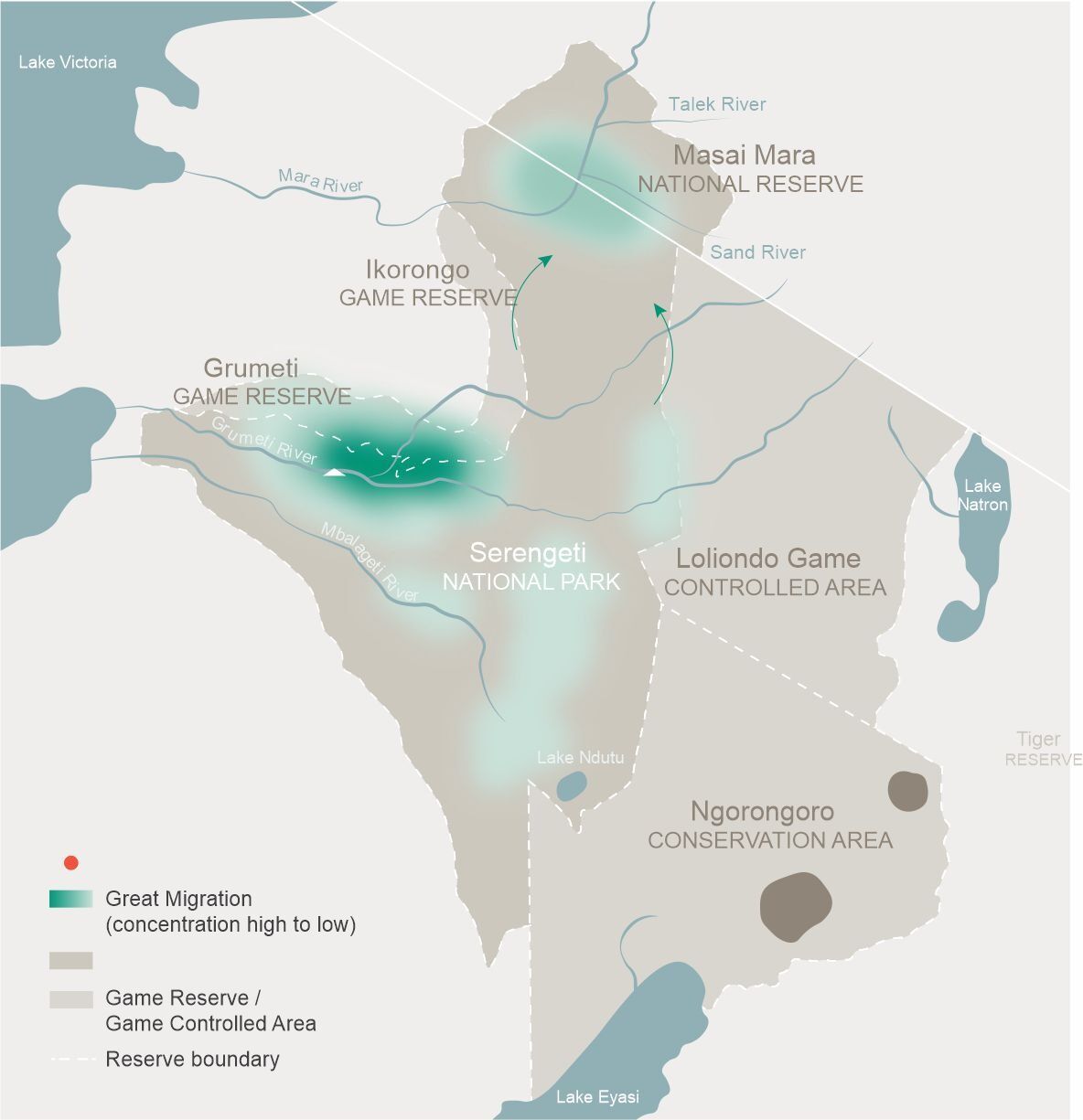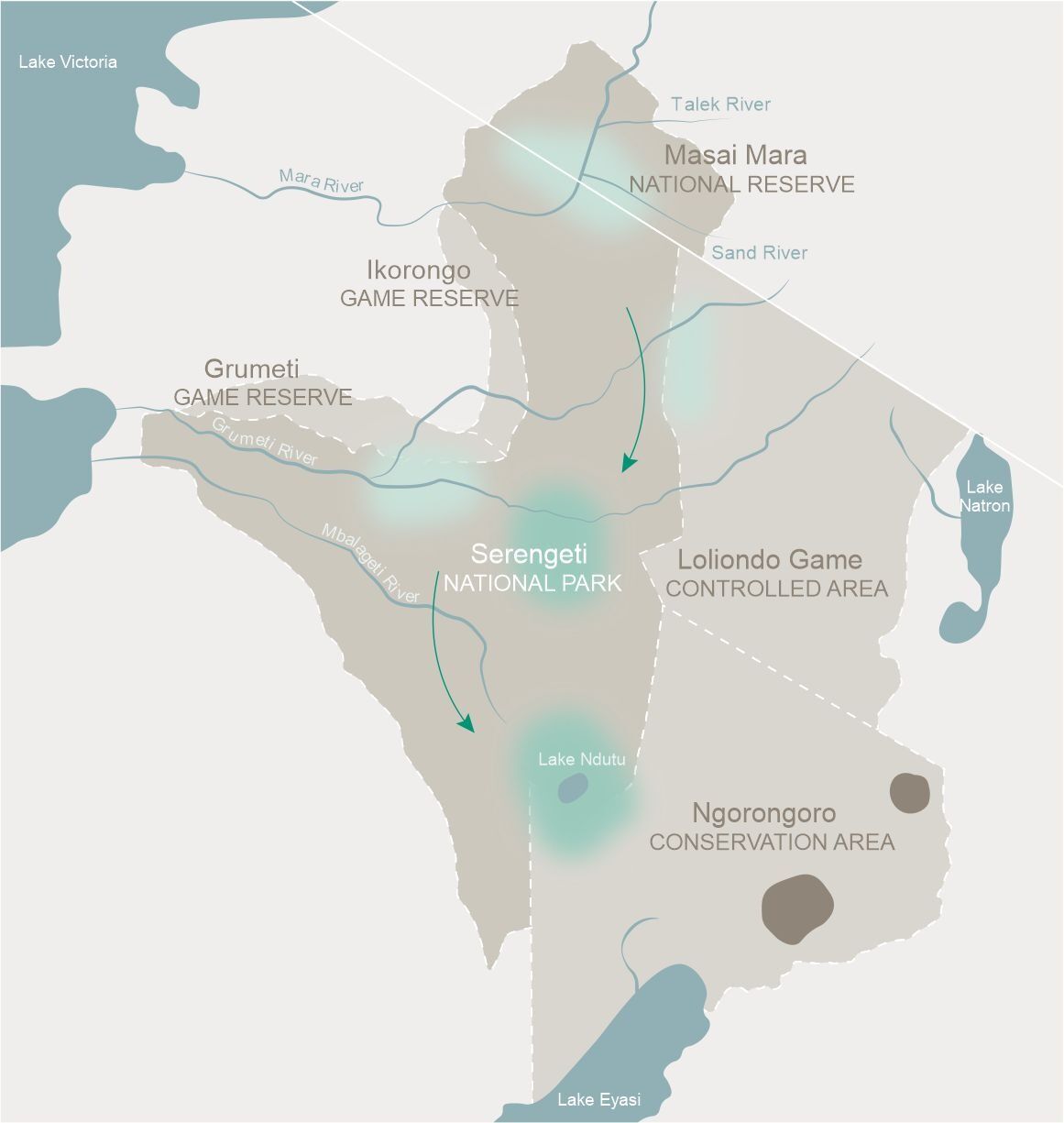Great Wildebeast Migration
The annual movement of wildebeest and other herbivores across the Serengeti-Mara ecosystem is rarely the same in terms of precise timing and direction.
ONE OF THE 7 NATURAL WONDERS OF THE WORLD
Considered the most thrilling spectacle in the animal kingdom, this epic journey migrates from Tanzania’s Serengeti to Kenya’s Masai Mara.
THE WORLD’S LARGEST OVERLAND MAMMAL MIGRATION
The annual movement of wildebeest and other herbivores across the Serengeti–Mara ecosystem consists of more than 1.5 million wildebeest, 500,000 zebra, 200,000 Thompson’s gazelle and 18,000 eland.
THE ANIMALS MIGRATE OVER 800 KM (500 MI)
Due to the sheer size of the herd, the animals have to move to be able to survive. The herds generally follow the rain, as where there is rain, there is fresh grass. Once the grass is depleted in one area, they will move to another grassy area.
The herds typically give birth on the short grassy plains of the southern Serengeti, an area with nutrient-rich soil vital for the wildebeest and their newborn calves. This diverse ecosystem features forested regions, marshlands, soda lakes, and expansive open plains.
The animals travel in splinter herds through the central Serengeti towards the western corridor. It’s an ideal time to enjoy a full day out with a bush lunch, observing these impressive groups as they move in long, winding lines.
Smaller splinter herds typically gather in the western corridor before making their way north.
Large herds gather in the northern Serengeti and the Masai Mara, following the rains as they cross into the Masai Mara and frequently return to the Serengeti. This movement continues over several months, with more than 10 well-known river crossing points where these dramatic migrations occur.
The migration herds are once again heading directly towards the central Serengeti. Along the way, some groups may branch off and travel south through the eastern, western, or central regions. The herds move at varying speeds, with many passing through the Lobo area on their way to the southern plains.



















































































